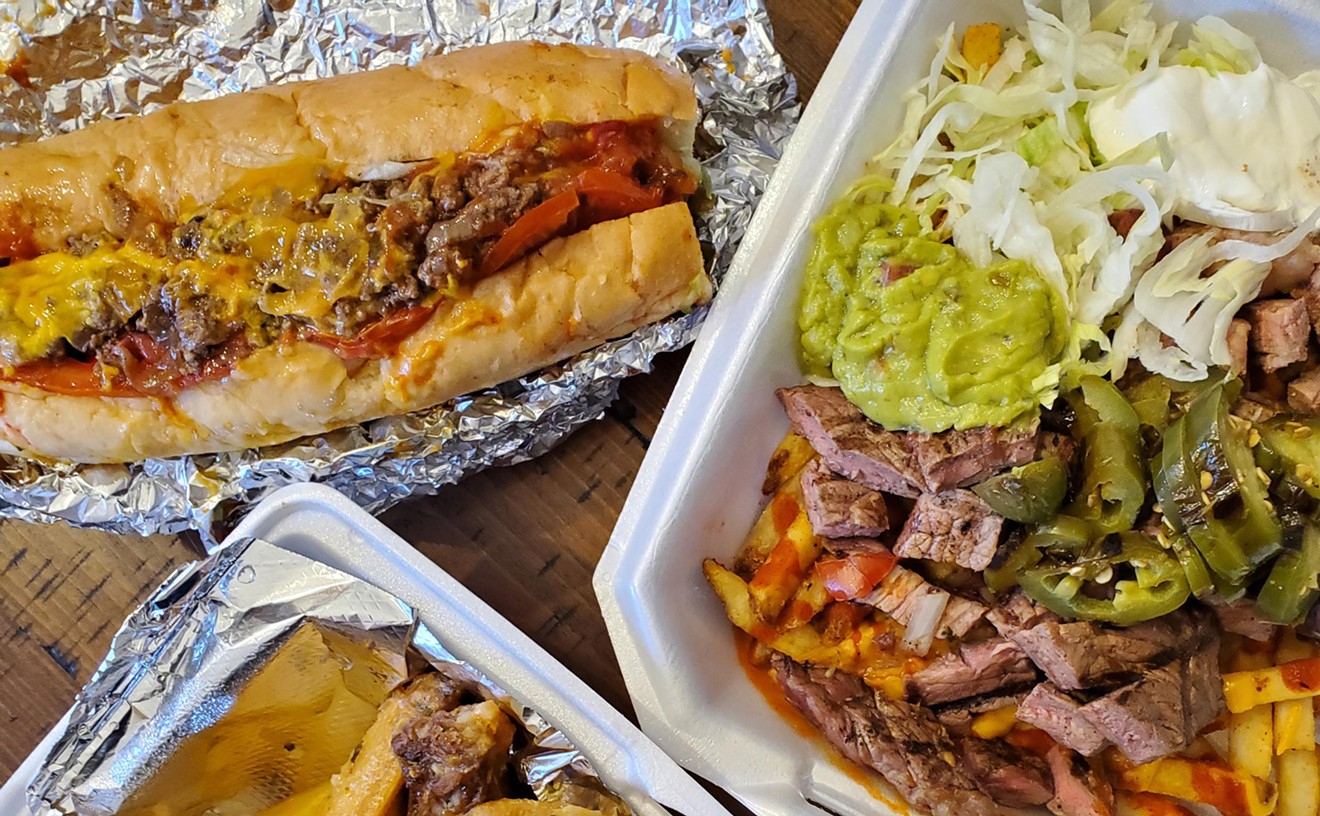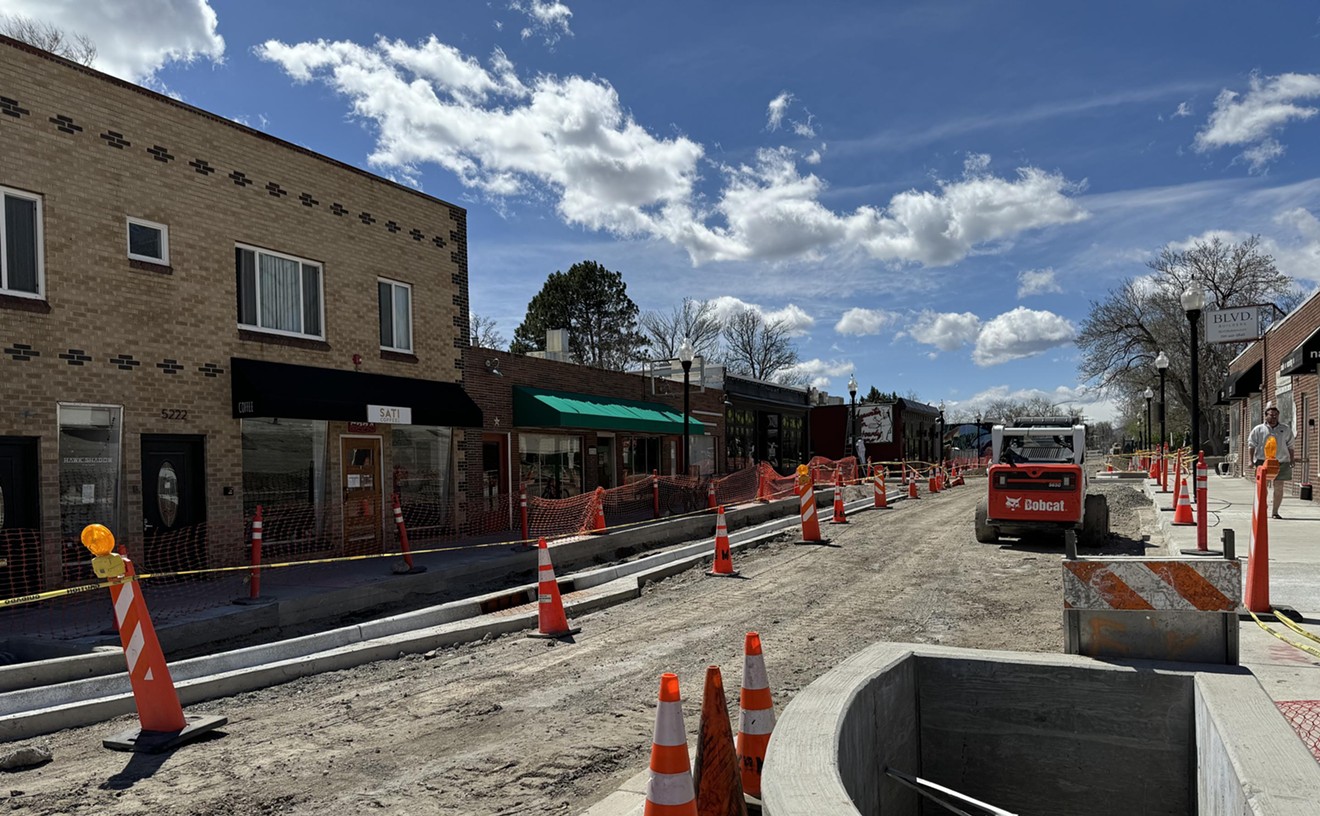There are more than forty restaurants in Denver's Lower Highland neighborhood, and that's if you stop counting at I-25. Extend the boundary by one block to the Platte River and you pick up another seven: a sushi place, a gourmet pizza shop, a wine bar/coffee shop, a date-night destination, a teahouse, an organic breakfast joint and an ancient bar room famous for serving perfect hamburgers all the way to closing time.
Count them any way you want, there are a lot of restaurants in the 80211 — approximately one for every 300 residents of Denver's original suburb, which began its life as a wealthy purist enclave, the original planned community, separated from the rest of the dirty city not by a gate, but by a river.
The north side has always been a pretty good place to eat, thanks to waves of ethnic groups that moved in and set up shop and kitchens, building sedimentary layers of culinary culture. It started with the pasta joints and delis built by the Italians in the '30s, '40s and '50s, followed by the taquerías and roving burrito carts that came with the Chicano migration in the '60s.
Fortunately, you can still find a good, cheap slice of pizza or a generous plate of spicy green chile for under five bucks here. But you can also drop $15 on a duck sandwich. A really friggin' good duck sandwich.
The Lower Highland restaurant boom can be traced to the latest wave of immigrants to the area: mostly white, moderately affluent couples who bring with them higher rental rates, a new nickname with more curb appeal ("LoHi") and expensive, excellent restaurants. Ever since Lola traded its South Pearl Street digs for a risky new home in the old Olinger Mortuary complex in 2006 — and then proceeded to pack in the crowds every day and night of the week — new restaurants have popped up like dandelions in the cracks of the neighborhood, in retrofitted, modernized old buildings previously left for dead.
And just when it seems that entropy should kick in — that there are simply too many restaurants in too small an area — another one pops up and thrives. Or so it appears on a Friday night, when lines coil outside not one, but two gourmet ice cream shops (Little Man Ice Cream and the Red Trolley), and the local dinner spots have no room at the counter bar, no open tables, not even for locals.
The vibe is a little less manic — and a lot less fancy — at the Highland Tavern, a big, classic American-style joint at the base of 34th and Navajo, where gentrification has come more slowly. Housed in a turn-of-the-century brick building, the Tavern is the latest in a long line of saloons that have occupied this space since the '30s. Above the door, you can still see the faded sign for the Coors Tavern, which was one of two pubs in the country to have Coors on tap in the mid-'40s.
When partners Brian Sommatino, Kris Baehre and Andy Stutz turned this address into the Highland Tavern in 2006, they saw a fledgling community in need of a low-maintenance place to drink and eat. The neighborhood was still a little dodgy: Gang tags splattered the walls and alleyways, a whiff of danger lingering from the days when drug traffic and turf wars were as much a part of the area as historic bungalows, Catholic churches and divey old bars. The building itself was dark and cavernous, its windows bricked up.
"There was a strong community vibe, but it was a little rough-and-tumble," says Sommatino, who is bald, wiry and friendly — but looks like he could hold his own in a bar scrap, if necessary. "I grew up in L.A., so I wasn't intimidated by the area or the people. We just thought, 'This is a great place to build a great clientele and bring the people of the neighborhood together.'"
Both Sommatino and Stutz had experience bringing life back to old buildings and filling them with people — first with the Broadway Brewing Company, which they opened in the pre-Ballpark days of north Broadway, and then with the Goosetown Tavern, which they helped create in a then-desolate stretch of East Colfax. With Baehre, a friend and former computer guy, the group set out to make the Highland Tavern an unpretentious spot with good beer and tasty food.
The beer came quickly. The food took a couple of years.
Under chef Jeremy McMinn, who had honed a talent for pub grub at the better-than-you-would-expect British Bulldog as well as some fine-dining chops at Fruition and Venue, the Tavern's kitchen finally opened in 2009. McMinn and sous chef David Bumgardner, a former buyer for Marczyk Fine Foods, focus on straightforward comfort food that emphasizes flavor over presentation. Their approach is so straightforward, in fact, that it beelines right to the sweet spot, with slightly modern adaptations of staples like creamy macaroni and cheese baked with a dusting of breadcrumbs and homemade tater tots. The sandwiches, from the Reuben to the stacked turkey combo, are piled between pillowy slices from the local Grateful Bread Company. Entrees rotate across a range of homestyle classics, from Monday meatloaf to Friday fish and Sunday pork ribs, with deliciousness the common thread. Tuesday's roast chicken, served with pan gravy, thick, buttery carrots and herby mashed potatoes, is tender, traditional and pretty close to perfect.
"The owners basically said to us, 'We want bar food. Really good bar food.' So we took that and created a menu that was accessible, with no fuss," explains McMinn. "The idea was to make everything you would find on a decent bar menu — and to figure out how to make it better and more interesting."
McMinn adds interest by making everything on the menu — minus the french fries — from scratch. Soup is made in small batches every day; all salad dressings are housemade, and even the "effin hot sauce" is McMinn's own blistering pepper blend. And he isn't afraid to indulge a love of pork: The other white meat shows up in four of the menu's featured items, including the "porkstravaganza" sandwich, an intimidating concoction of sausage, pork shoulder, cured pork and, just for good measure, bacon.
The Highland Tavern recently opened for lunch, serving staples like burgers and pork sandwiches as well as such European-influenced dishes as pierogis and spaetzle, a German egg pasta tossed with braised bacon and green beans. Although the tavern doesn't compete at the same culinary level as its contemporaries in the neighborhood, it's a solid refuge for locals seeking a break from the crowds and prices found up the hill, on the other side of Tejon.
And there are plenty of those locals. The place gets packed, especially on Wednesdays, when the Highland provides a home base for a scooter club, a kickball team and a free community poker tournament. Other nights, beery couples come to play Ping-Pong and pool. Late at night, tired restaurant folk congregate here, drinking and commiserating after long nights on the floor at nearby Lola, Vita, Gaetano's, Squeaky Bean and Root Down. "I would say 80 percent of our clients are locals, people who are relatively new to the area," says Sommatino, allowing that even in a neighborhood where nearly 70 percent of the population is Latino, the Tavern draws a mostly white crowd. Across the street, the Arabian Bar defiantly holds its own against the insurgency: While local chefs and bar managers drink at the Tavern, their Latino dishwashers and back-line workers are more likely to gather at the Arabian.
The contrast between the two is an apt metaphor for life in this part of Highland, and heightens the middle-world feeling that cloaks the Highland Tavern: In the wee hours, even when it's hopping, the place can feel isolated and echoey, like the bar at the end of the universe — or at least the end of the night.
"We're still out here in no-man's-land," says Sommatino. "Some people come here three or four times, they still can't figure out where to find us. That's okay with us. Because when people do find us, they want to come back. That's where it all begins."










